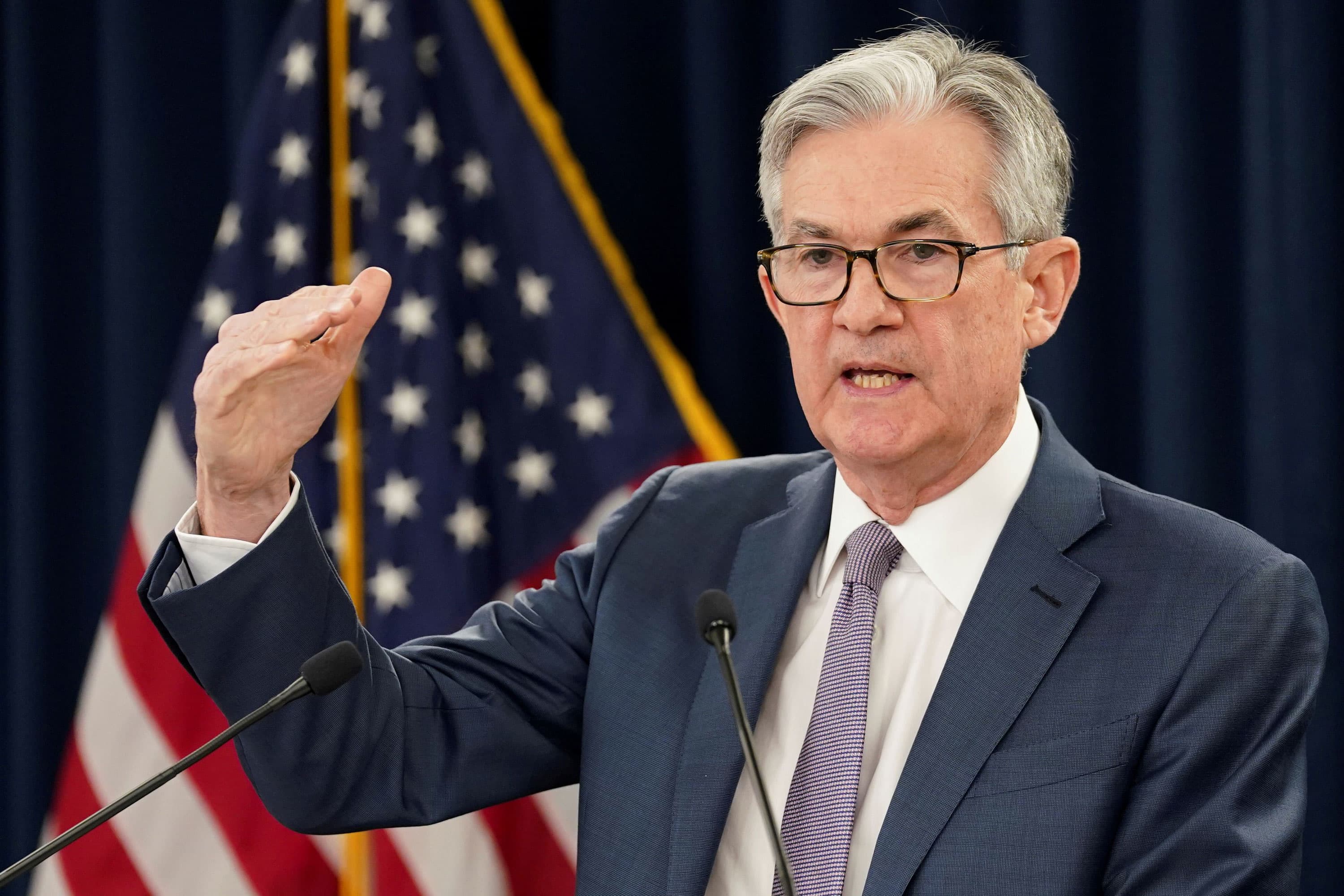Products You May Like
The Federal Reserve on Wednesday approved its first interest rate increase in more than three years, an incremental salvo to address spiraling inflation without torpedoing economic growth.
After keeping its benchmark interest rate anchored near zero since the beginning of the Covid pandemic, the policymaking Federal Open Market Committee said it will raise rates by a quarter percentage point, or 25 basis points.
That will bring the rate now into a range of 0.25%-0.5%. The move will correspond with a hike in the prime rate and immediately send financing costs higher for many forms of consumer borrowing and credit.
Along with the rate hikes, the committee also penciled in rate hikes at each of the six remaining meetings this year, pointing to a consensus funds rate of 1.9% by year’s end. The committee sees three more hikes in 2023 then none the following year.
The rate hike was approved with only one dissent. St. Louis Fed President James Bullard wanted a 50-basis-point increase.
The committee last raised rates in December 2018, then had to backtrack the following July and begin cutting.
In its post-meeting statement, the FOMC said it also “anticipates that ongoing increases in the target range will be appropriate.” Addressing the Fed’s nearly $9 trillion balance sheet, comprised mainly of Treasurys and mortgage-backed securities it has purchased over the years, the statement said: “In addition, the Committee expects to begin reducing its holdings of Treasury securities and agency debt and agency mortgage-backed securities at a coming meeting.”
The indication for about 175 basis points in rate increases this year was a close call: The “dot plot” of individual members’ projections showed eight members expecting more than the seven hikes, while 10 thought that would be sufficient.
Officials also adjusted their economic outlook on multiple fronts, seeing much higher inflation than they expected in December and considerably slower GDP growth.
Committee members bumped up their inflation estimates, expecting the personal consumption expenditures price index excluding food and energy to reflect 4.1% growth this year, compared to the 2.7% projection in December 2021. Core PCE is expected to be 2.7% and 2.3% respectively in the next two years before settling to 2% over the longer term.
On GDP, December’s 4% was sliced to 2.8%, as the committee particularly noted the potential implications of the Ukraine war. Subsequent years were unchanged. The committee still expects the unemployment rate to end this year at 3.5%.
“The invasion of Ukraine by Russia is causing tremendous human and economic hardship,” the statement said. “The implications for the U.S. economy are highly uncertain, but in the near term the invasion and related events are likely to create additional upward pressure on inflation and weigh on economic activity.”
Markets reacted negatively to the news, with the Dow Jones Industrial Average surrendering earlier gains.
Changing course
The central bank had slashed its federal funds rate in the early days of the pandemic to combat a shutdown that crippled the U.S. economy and financial markets while sending 22 million Americans to the unemployment line.
But myriad factors have combined to force the Fed’s hand on inflation, a condition that policymakers last year dismissed as “transitory” before capitulating. Officials over the past two months have strongly indicated that interest rate hikes are coming, with the main question left for investors being how many increases and how quickly they would come.
The current trend of price increases, at their fastest 12-month pace in 40 years, has been fed by demand that has far outstripped supply chains that remain clogged if less so than their pandemic-era peaks. Unprecedented levels of fiscal and monetary stimulus – more than $10 trillion worth – have coincided with the inflation surge. And the Ukraine war has coincided with a major spike in oil prices, though that has abated in recent days.
Heading into this week’s FOMC meeting, markets had been pricing in the equivalent of about seven 0.25% hikes this year, according to CME Group data. However, traders were split about 50-50 over whether the Fed might hike 50 basis points in May, as some officials have indicated could happen if inflation pressures persist.
Prices are up 7.9% year over year, according to the consumer price index, which measures a wide-ranging basket of goods and services. Energy has been the biggest burden, as gasoline prices have risen 38% in the 12-month period.
However, price pressures have broadened out from simply gas and groceries.
For instance, clothing prices, after plummeting in the early days of the pandemic, have risen 6.6% over the past year. Motor vehicle repair costs are up 6.3% and airline fares have jumped 12.7%. Rent of shelter costs, which make up nearly one-third of the CPI, have been moving up sharply in recent months and are up 4.8% year over year.
All of those cost increases have left the Fed’s 2% inflation target in the dust.
The Fed in September 2020 approved a new approach to inflation, in which it would let it run hotter in the interest of a full and, most notably, inclusive employment goal that spans across racial, gender and wealth. However, the change in approach was followed almost immediately by more pernicious inflation than the U.S. economy had seen since the days of the Arab oil embargo and inflation that peaked in the early 1980s at nearly 15%.
Back in those days, the Paul Volcker-led Fed had to jack up interest rates to a point where they tipped the economy into recession, something central bankers now want to avoid. Back then, the funds rate eclipsed 19%.
